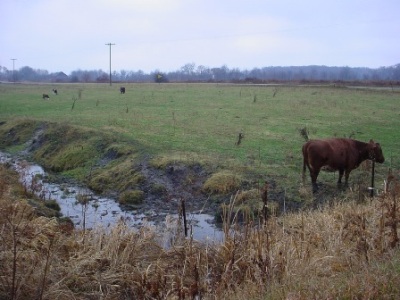White River Watershed Project - Water Quality

Project Home Page | Study Area | Water Quality | Project Information | Project Partners | Additional Resources
Threats in the White River Watershed


Sediment
Temperature
Nutrients
Toxic Substances
Hydrologic Flows
Exotic Species
Microcysts
Sediment
Natural sedimentation is present in all stream environments due to erosion by wind and water. However, excessive sedimentation caused by human alterations can severely degrade a stream system. Excess sediment buries gravel and cobble substrate that serve as critical habitat for many fishes and invertebrates. The sources of excessive sedimentation in the White River Watershed include stream banks, road stream crossings, and agricultural and urban runoff. A suspected source of sedimentation is construction areas.
Temperature
All aquatic organisms have a preferred temperature range. If temperatures get too far above or below this preferred range, the number of individuals of the species decreases until finally there are none. Temperature also is important because it influences water chemistry. As water temperature increases, its ability to hold dissolved oxygen decreases, thereby reducing the amount of oxygen in the water available to fish and other aquatic life. The sources of thermal pollution in the White River Watershed include turbidity, loss of stream bank vegetation, urban runoff, agricultural runoff, and impoundments. Suspected sources of thermal pollution in the White River Watershed include water withdrawals and gravel mining.
Nutrients
Nutrients are essential to the growth of living things. In terms of water quality, nutrients can be considered as pollutants when their concentrations are sufficient to allow excessive growth of aquatic plants and algae. Blooms of algae resulting from nutrient enrichment eventually die and decompose, removing oxygen from the water and potentially leading to levels of dissolved oxygen that are insufficient to sustain normal life forms. The main nutrients of concern are phosphorus and nitrogen. The sources of nutrients in the White River Watershed include livestock in streams, and agricultural and urban runoff. Suspected sources of nutrients include groundwater, failing septic systems, and residential and commercial fertilizer use.
Toxic Substances
Toxic substances are chemicals which cause human and wildlife health problems. They include organic and inorganic chemicals and metals, pesticides, formaldehyde, household chemicals, gasoline, motor oil, battery acid, and roadway salt. The appearance of these chemicals in the White River Watershed are sporadic and the concentrations not considered to be dangerous; however, the presence of such contaminants indicates humans are having an impact on the waterbodies. Suspected sources of these substances in the watershed include road stream crossings, underground storage tanks, disposal areas, septic systems, private and commercial wells, and agrichemical applications.
Hydrologic Flows
Water is usually managed for both quantity and quality. Too much water or too little water are both issues of water quantity. Water is an important mechanism for transport of energy, nutrients, chemicals, and sediments. In the White River Watershed, impoundments and agricultural runoff are known to affect hydrologic flow. Suspected sources of changes to hydrologic flows include urban storm water, excessive water withdrawals, and gravel mining.
Exotic Species
Since the early 1800's, at least 180 new aquatic organisms have become established in the Great Lakes. There has been an increasing rate of invasion in the Great Lakes over the past two centuries. Since 1970, on average, there has been one invader recorded every eight months. In the White River Watershed, boat hulls and bilges and human transport are known sources of exotic species introduction.
Microcysts
Microcystis is a genus of cyanobacteria (blue-green algae). It is found naturally at low concentrations in freshwater systems and sometimes in low salinity areas. It occasionally forms a harmful algal bloom. Microcystis produces a toxin (microcystins) that can affect human and animal health. Although Microcystis is present in most lakes, it is rarely noticeable. In recent years, though, some lakes have experienced much higher than normal concentrations. This is true for White Lake. There is much speculation about why this is occurring. Some scientists suggest that the increase in Microcystis colonies is related to the invasion by zebra mussels. These mussels were found to selectively reject unpalatable toxic strains of Microcystis occurring as large colonies. The presence of zebra mussels alone does not guarantee Microcystis problems. Many other factors may contribute to the problem, including the lake's nutrient status and temperature, as well as climatic conditions.
